- europages
- >
- COMPANIES - SUPPLIERS - SERVICE PROVIDERS
- >
- potentiometers
Results for
Potentiometers - Import export

NOVOTECHNIK MESSWERTAUFNEHMER OHG
Germany
If, in a highly sensitive control system, the amplification should, for example, be so arranged that the control circuit will be stable with the mean slope (gradient) of the sensor, then it is important to be aware of any variations there may be in that slope (Fig. 12a, Fig. 12b). If, at any point, the gradient is appreciably steeper than the mean gradient, then there will be a higher closed-loop gain in this position and this could lead to feedback oscillation. If, on the other hand, the gradient is less steep at some point than the mean gradient, then repeatability would be reduced and there would be less control accuracy. If we relate this type of local gradient variation gl to the mean gradient go of the potentiometer, then this criterion is independent of the potentiometer length and can be used for the direct comparision of various potentiometers.
Request for a quote
NOVOTECHNIK MESSWERTAUFNEHMER OHG
Germany
In 1978, Novotechnik introduced the term Microlinearity, which is defined as the maximum linearity variation within a travel or angular increment that amounts - as with smoothness measurement - to 1 % of the electrical range if nothing to the contrary is defined. Microlinearity is indicated as a percentage of the absolute voltage that is applied. Fig. 11 illustrates the characteristic obtained for a potentiometer with a microlinearity error. This was evaluated by a computer-supported system while making linearity measurements. The travel increments are super-imposed on the linearity curve and have an overlap of at least 50 %. Contrary to a smoothness measurement, the error here is pureley a linearity error that describes the maximum error within a defined increment. Microlinearity does not, however, make it possible to determine whether a potentiometer will be suitable for a particular applications because any variations in gradient (sensitivity) can only be determined with...
Request for a quote
NOVOTECHNIK MESSWERTAUFNEHMER OHG
Germany
Smoothness is a measure of the deviations from perfect regularity that appear in the output voltage of a potentiometer. This irregularity is measured over a specified travel increment, for example 1 %, and is expressed as a percentage of the applied voltage. For the measurement of smoothness, the VRCI definition calls for a bandpass filter to be used as a means of suppressing any linearity error and for the potentiometer to be operated with a load resistance (e.g. 100 . Rp). This method has certain disadvantages: a) The use of a filter causes both the absolute wiper velocity and any changes in such velocity to affect the smoothness values. Since the filter partly integrates and partly differntiates, the chart-recorded smoothness curve does not accurately indicate the variations in the output signal. b) The load applied to the potentiometer also contributes to error by causing variation in the contact resistance which is greatest with the wiper at the voltage application end and...
Request for a quote
NOVOTECHNIK MESSWERTAUFNEHMER OHG
Germany
When, some 60 years ago conductive plastic potentiometers were first introduced onto the market, it was apparent that although the winding jumps which were a feature of wire-wound potentiometers had been overcome, absolute smoothness of the output voltage could not be achieved. Following some basic reserach by. h. Wormser 4, 5, 6 , the term "smoothness" was included in the standard issued by the Variable Resistive Compontents Institute (VRCI). Although this definition was adequate at that time it cannot serve as a system definition for many applications. This is because it is now possible to produce potentiometers with appreciably better smoothness and linearity values. For this reason, Novotechnik has sought over the past years to develop definitions better suited to the current state fo the art. The various methods used are discussed and evalutated below.
Request for a quote
NOVOTECHNIK MESSWERTAUFNEHMER OHG
Germany
From here onwards, we are only concerned with the linear characteristics (linearity). Relationships must be suitably adapted for applications with non-linear characteristics (conformity) but there are no essential differences. As already mentioned in Section 2, the required linearity values can only be utilized so long as the signal output by the sensor "potentiometer" carries no current. We have now to consider the effect of wiper current on linearity. Fig. 10a illustrates the functional relationship between wiper current, contact resistance and linearity error. As is shown by the example in Fig. 10b (Characteristic 4), with a wiper current of 10 µA and a contact resistance of 10 kOhm, a potentiometer which has a resistance of 2 kOhm already has linearity error of 1.1 %. A similar situation arises with an ohmic load. This clearly shows how important are the roles played by both wiper current and contact resistance. Fig. 10a Fig. 10b
Request for a quote
NOVOTECHNIK MESSWERTAUFNEHMER OHG
Germany
As already indicated under Point 3, conformity is a more general concept than linearity. The definition of absolute conformity is similar to that of absolute linearity. It is essential for an index point to be defined. The functional relationship can either be determined mathematically to be defined. The functional relationship can either be determined mathematically or by plotting a number of points to establish a curve with the aid of suitable interpolation. It is also possible with a potentiometer to achieve steadily increasing or steadily decreasing functions such as logarithmic, exponential, sinusoidal or cosinal functions.
Request for a quote
NOVOTECHNIK MESSWERTAUFNEHMER OHG
Germany
With the ever increasing automation of assembly lines, users are finding that values for absolute linearity are steadily gaining importance. Unlike independent linearity, for absolute linearity the reference slope is fully defined (Fig. 8) so that there is no need for subsequent system trimming. The definition of an index point establishes a relationship between the mechanical input value (travel or angle) and the output voltage. Potentiometers whose linearity is defined by these criteria can be installed without a need for subsequent adjustment. As with independent linearity, it is best to determine the absolute linearity of a potentiometer by comparing its output with that of a master potentiometer. With absolute linearity, it is frequently necessary for the tolerance fields to be stepped. Fig. 9 shows a practical example. Fig. 8 Fig. 9
Request for a quote
NOVOTECHNIK MESSWERTAUFNEHMER OHG
Germany
If a voltage U0 is applied to a potentiometer with a linear characteristic as in Fig. 5 and the wiper is moved in direction Alpha (standardized movement, angle 0;1 ) then the relationship illustrated in Fig. 6 will exist between the output voltage and the mechanically input value. The maximum deviation of the potentiometer curve from an ideal straight line is referred to as the independent linearity error. The slope and axis intercept of this straight line can be so chosen that the error f within the travel L1 is minimized. The error ±f is indicated as a deviation in percentage terms of the output voltage from the theoretical in relation to the input voltage. Since direct measurement of the potentiometer characteristic does not make it possible to assess the extent of such an error, only the difference between the potentiometer characteristic and that of an essentially perfect master potentiometer is plotted as in the practical example given in Fig. 7. Typical values for...
Request for a quote
NOVOTECHNIK MESSWERTAUFNEHMER OHG
Germany
Of all the quality features mentioned, linearity and conformity are the values most often defined in the existing literature (2). These terms express the extent to which the voltage output from a potentionmeter, and also other types of angular of linear movement sensor, differs from a prescribed theoretical function. In by far the majority of cases, the desired output function is directly proportional to the angel or linear movement that is input. Formula: Fig. 5. Whereby m characterizes the gradient, the offset voltage of the potentiometer and the linear or angular travel. Where there is a linear relationship, deviation is referred to as linearity. Where the relationship is nonlinear. U = f (x) + a + b the deviation is referred to as conformity. Fig. 5
Request for a quote
NOVOTECHNIK MESSWERTAUFNEHMER OHG
Germany
When we refer nowadays to a potentiometer as a sensor, it is important to bear in mind the statements made here only apply if the potentiometer is connected as voltage divider rather than as a variable resistor (rheostat) (Fig. 2). The wiper voltage must be connected, free of load, to an operational amplifier such as a 741, OP 07 or some other component with a high input impedance. Fig. 3 explains the terms used, such as electrical and mechanical travel. L1 indicates the defined electrical travel. L2 indicates the continuity travel which also includes the non-linear connection fields Fig. 4. L3 indicates the total electrical contact travel of the potentiometer. L4 indicates the mechanical travel. An electrical potential need not be defined for the whole of this travel. In case of nothing otherwise is defined, the fields L1, L2, L3 and L4 are nominally designed symmetrically. Fig. 2 Fig. 3 Fig. 4
Request for a quote
NOVOTECHNIK MESSWERTAUFNEHMER OHG
Germany
Rapid developments in the fields of control engineering and in microprocessor and semiconductor technology have resulted in the widespread use of electronically controlled systems in every branch of industry today. This has created a need for sensors that are inexpensive but, at the same time, sufficiently robust, both electrically and mechanically, to withstand a wide range of temperatures (e.g. from -40 to +160 degrees centigrade), particularly in applications involving large quantities, such as the automobile industry. Fig. 1 provides a summary of the various types of sensors for angular and linear motion that are in use today. This paper is concerned with quality criteria (1) and (2) applicable to conductive-plastic potentiometers for use as sensors for angular and linear motion. Such potentiometers essentially comprise the following components: 1. The resistance element (support material + a resistance track of conductive plastic) 2. A wiper (precious metal alloy) 3. A...
Request for a quote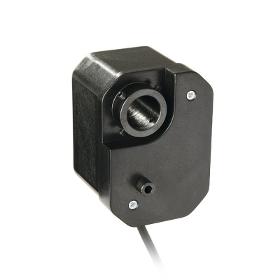
SIKO GMBH
Germany
Through hollow shaft Ø 14 mm. Adaptation to various measurement distances owing to a wide range of gear ratios. Compact, low-cost design. Potentiometer or power output. Easy mounting.
Request for a quote
SIKO GMBH
Germany
Solid shaft Ø 4 mm or Ø 6 mm. Adaptation to various measurement distances owing to a wide range of gear ratios. Integrated slip clutch to protect the potentiometer. Compact design. Potentiometer, power or voltage output. IP65 protection category.
Request for a quote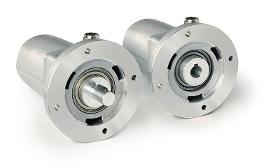
SIKO GMBH
Germany
Extremely resistant to external influences. Solid or blind-hole hollow shaft, max. Ø 20 mm. Adaptation to various measurement distances owing to a wide range of gear ratios. Integrated slip clutch to protect the potentiometer. Potentiometer, power or voltage output. IP65 protection category.
Request for a quote
SIKO GMBH
Germany
Extremely resistant to external influences. Solid or blind-hole hollow shaft, max. Ø 20 mm. Adaptation to various measurement distances owing to a wide range of gear ratios. Integrated slip clutch to protect the potentiometer. Potentiometer or power output. IP65 protection category. Up to 3 cam-operated switch outputs, freely adjustable.
Request for a quote
SIKO GMBH
Germany
Solid shaft Ø 6 mm. Adaptation to various measurement distances owing to a wide range of gear ratios. Integrated slip clutch to protect the potentiometer. Compact design. Potentiometer or power output. IP65 protection category. Up to 3 cam-operated switch outputs, freely adjustable.
Request for a quote
SIKO GMBH
Germany
And fine reading. Through hollow shafts up to ø20 mm. Adaptation to various measurement distances owing to a wide range of gear ratios. Integrated slip clutch to protect the potentiometer. Compact design. Potentiometer, power or voltage output. IP68 protection category with oil filling possible. Easy mounting.
Request for a quoteDo you sell or make similar products?
Sign up to europages and have your products listed
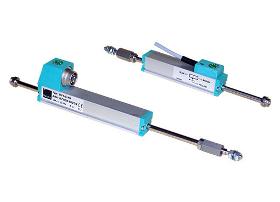
BURSTER PRÄZISIONSMESSTECHNIK GMBH & CO KG
Germany
Displacement sensors models 8710 and 8711 with resistance tracks made of conductive plastic material are designed for a direct and accurate measuring of mechanical displacements. A special ball joint coupling is mountable on both ends of the driving rod. Because of this the sensor may be used free of clearance or lateral forces also with angular or parallel misalignment between sensor and measuring device. A special multi-fingered slider provides a good electrical contact also at high adjustment speeds or vibrations. Areas of application are: —Electromagnets —Switch and button deflections —Pneumatic cylinders —Press-fits (longitudinal press-fits) —Hydraulic cylinders —Measurements of deformation and bending —Length tolerances —Feeding paths Due to the technology employed in potentiometric displacement sensors, they always operate with a sliding contact system.
Request for a quote
BURSTER PRÄZISIONSMESSTECHNIK GMBH & CO KG
Germany
These displacement sensors are potentiometric displacement sensors used for direct measurement, testing and monitoring of mechanical displacements. The spring-loaded control rod eliminates the need of coupling with the measurement object. A prerequisite for a very long life duration of the devices is a parallel alignment of the motion direction of the measurement object and the rod. Areas of application are: Displacement on: —Electromagnets —Hydraulic cylinders —Switches and buttons Measurements of: —Deformation —Bending —Press-fits —Feed strokes Due to the technology employed in potentiometric displacement sensors, they always operate with a sliding contact system. FEATURES: —Measurement ranges: 0 ... 10 mm to 0 ... 150 mm —Non-linearity up to 0.05 % F.S. —Resolution 0.01 mm —Follower roll on request —Optional with internal spring
Request for a quote
SIKO GMBH
Germany
Profile GP44: Extremely resistant to external influences Solid or blind-hole hollow shaft, max. Ø 20 mm Adaptation to various measurement distances owing to a wide range of gear ratios Integrated slip clutch to protect the potentiometer Potentiometer or power output IP65 protection category Up to 3 cam-operated switch outputs, freely adjustable
Request for a quote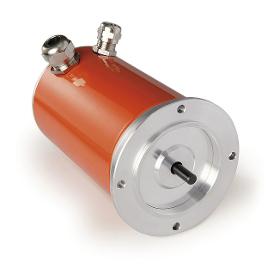
SIKO GMBH
Germany
Profile GP43: Solid shaft Ø 6 mm Adaptation to various measurement distances owing to a wide range of gear ratios Integrated slip clutch to protect the potentiometer Compact design Potentiometer or power output IP65 protection category Up to 3 cam-operated switch outputs, freely adjustable
Request for a quote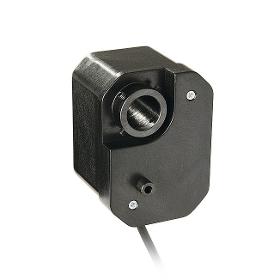
SIKO GMBH
Germany
Compact design with through hollow shaft Profile GP02: Through hollow shaft Ø 14 mm Adaptation to various measurement distances owing to a wide range of gear ratios Compact, low-cost design Potentiometer or power output Easy mounting
Request for a quote
SIKO GMBH
Germany
Compact design with solid shaft Profile GP03/1: Solid shaft Ø 4 mm or Ø 6 mm Adaptation to various measurement distances owing to a wide range of gear ratios Integrated slip clutch to protect the potentiometer Compact design Potentiometer, power or voltage output IP65 protection category
Request for a quote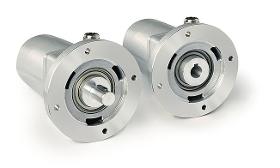
SIKO GMBH
Germany
With solid or blind hole shaft Profile GP04/1: Extremely resistant to external influences Solid or blind-hole hollow shaft, max. Ø 20 mm Adaptation to various measurement distances owing to a wide range of gear ratios Integrated slip clutch to protect the potentiometer Potentiometer, power or voltage output IP65 protection category
Request for a quote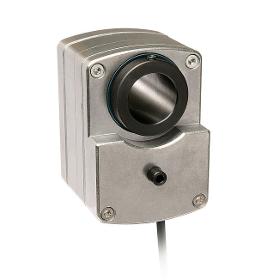
SIKO GMBH
Germany
Robust housing with through hollow shaft Profile GP09: and fine reading Through hollow shafts up to ø20 mm Adaptation to various measurement distances owing to a wide range of gear ratios Integrated slip clutch to protect the potentiometer Compact design Potentiometer, power or voltage output IP68 protection category with oil filling possible Easy mounting
Request for a quote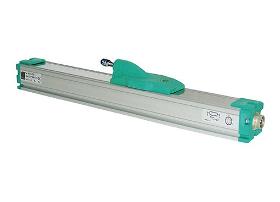
BURSTER PRÄZISIONSMESSTECHNIK GMBH & CO KG
Germany
The high resolution allows linear measurements to be accurately sized even in large measurement ranges. Conversion of rotatory and translational motion by spindles, wires or others is not necessary for direct displacement measurement. Areas of application are: —Hydraulic and pneumatic cylinders —Detection of positions on coordinate —Inspection machines —Displacement of plungers, knee levers or extruders —Coil and de coil lengths —Strokes on chassis —Metering strokes Displacement sensors model 8718, using a resistance track made of conductive plastic material, are suitable for direct, accurate and absolute measurements of displacements and lengths. Special processes are applied to give the resistance tracks low friction, low tendency to stick/slip, resistance to abrasion and long-term stability. The vibration-cushioned slider allows a clear signal output even by slight shocks or high operating speeds up to 10 m/s.
Request for a quote
BURSTER PRÄZISIONSMESSTECHNIK GMBH & CO KG
Germany
Potentiometric displacement sensors are used for direct, precise measurement of mechanical displacements. The mechanical parts of the measuring equipment must be set-up in such a way that the sliding shaft can move without play or lateral forces. A special multi-finger slider ensures good contact even when the adjustment speed is high or in the presence of vibration. With its housing diameter of only 12.7 mm, the model 8709 is also suitable for highly compact structures. The movable fastening clamps allow the user variable options for attaching the sensor without complication. Optionally available adaptations, such as flange and ball joint versions, extend and complement the range of possible applications. Typical fields of application include: Measuring the stroke on riveting machines Measuring insertion distances Offset measurements on bearings Spring travel measurements on axes Measurements of the movement of hoisting platforms Length measurements on pipe bending machines
Request for a quote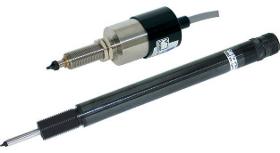
BURSTER PRÄZISIONSMESSTECHNIK GMBH & CO KG
Germany
Linear displacements and mechanical values which can be converted to displacements (e.g. compressive and tensile force, strain, torque and vibration) may be measured by these DC/DC displacement sensors. The probe tip of these sensors is pushed onto the measuring object by a spring. This makes it possible to use these sensors were a mechanical modification of the measurement object (mounting hole) is not allowed or difficult. Output voltage as function of the displacement with the impedance as parameter. Sensors of series 87350 generally consist of an oscillator, a demodulator and a transformer with moveable core. They are energized by DC voltage. The oscillator uses this DC voltage to generate the carrier frequency, which is needed for the operation of the sensor. Dependent on the position of the core, which is made of ferromagnetic material, voltages are induced by the two secondary coils of the transformer.
Request for a quote
BURSTER PRÄZISIONSMESSTECHNIK GMBH & CO KG
Germany
As an angle sensor that is both accurate and economical, this rotary potentiometer is suitable for all types of analog angle measurement up to 350°. Typical fields of application include: —Position feedback in servo-systems —Pendulum weighing machines —Cam and butterfly flap positions —Jockey roller controllers —Measuring the tension of threads and tape —Trigonometric measurements at joints The heart of the potentiometric angular displacement sensors is an extremely precise, low-wear resistor track made of plastic. Due to its high resistance to abrasion, the sensors are particularly suitable for measurements for the purpose of quality assurance in ongoing production, where a long service life and large numbers of rotations are required. The potentiometric angular displacement sensor uses a multi-finger slider system with precious metal contacts. This ensures good contact even when moving at high speed and in the presence of vibrations.
Request for a quoteResults for
Potentiometers - Import exportNumber of results
32 ProductsCompany type